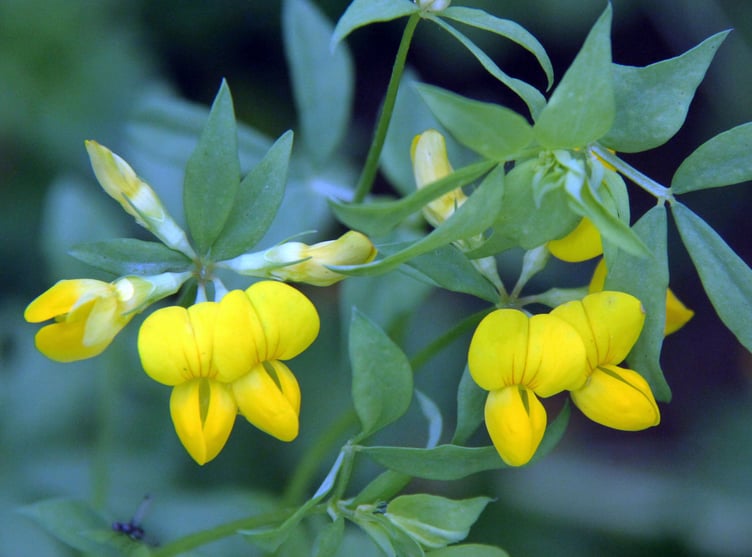Walking along one of our narrow roads, I came across an open gateway into what was a harvested cornfield.
I was not able to walk by it without taking a look inside the field where there was some yellow Bird’s-foot Trefoil in bloom, right beside the gate.
This a plant that grows at the bottom of hedges and arable land and alongside road edges.
It is so named as its seed pods are arranged like a bird’s foot.
There was also some Ramping Fumitory growing among weeds in the hedge creep.
Their slender stems require help from nearby plants to grow upright and have pink, almost tubular, flowers with dark red apexes and they are familiar cornfield weeds throughout the country.
Scarlet Pimpernels are another plant that can be seen around the hedge creep with their tiny five-petalled scarlet flowers that have yellow-tipped stamens.
In fact, they tend to grow virtually everywhere including waste ground, pathways and on sandy dunes.
Occasionally they have white, blue or yellow and sometimes even scarlet and blue blooms on the same stem and they are poisonous to humans, dogs and horses.
I didn’t want to walk too far into the field in case the farmer turned up with his tractor and plough, but I spotted something white near the middle of the field and decided to take a look.
It was a plant with several white, four-petalled flowers. I found a similar one some years ago in a cornfield and at the time I thought it might be a wild cabbage or turnip, but they have yellow blooms, so it was back to scanning all the pages of my flower books.
And this time I was lucky and decided it must be a Dame’s Violet, a plant that was introduced from Europe and has been cultivated for centuries in gardens all over Britain and, as usual, escaped into the wild.
Also known as Sweet Rocket, their blooms can be white or purple and attract bees and butterflies.
There was also lots of Redshank, or Red Leg, as farmers call it, when talking of their love of arable land weeds.
Their crowded pale pink to red flowers are on short spikes and their tall stems have a reddish tint as they mature.
On the way home, walking down North Hill, I spotted a lone Hedgehog mushroom growing on the hedge. So named because it has spikes beneath its cap instead of the usual gills – hence the similarity.
Unusual, really, to find one on its own instead of in a group.
A Comma butterfly was taking a rest on the vegetation and allowed me to photograph it.
This is a once seen, never forgotten, butterfly with almost ragged-edged wings that give it a tattered look.
They hibernate during winter, and in spring they patrol the hedgerow where they lay their eggs so their caterpillars can feed on Common Nettles.
The resulting butterflies, so named for the comma mark, a ‘C’, on the underside of their wings, can be seen up to September.

.jpeg?width=209&height=140&crop=209:145,smart&quality=75)


.jpeg?width=209&height=140&crop=209:145,smart&quality=75)
Comments
This article has no comments yet. Be the first to leave a comment.